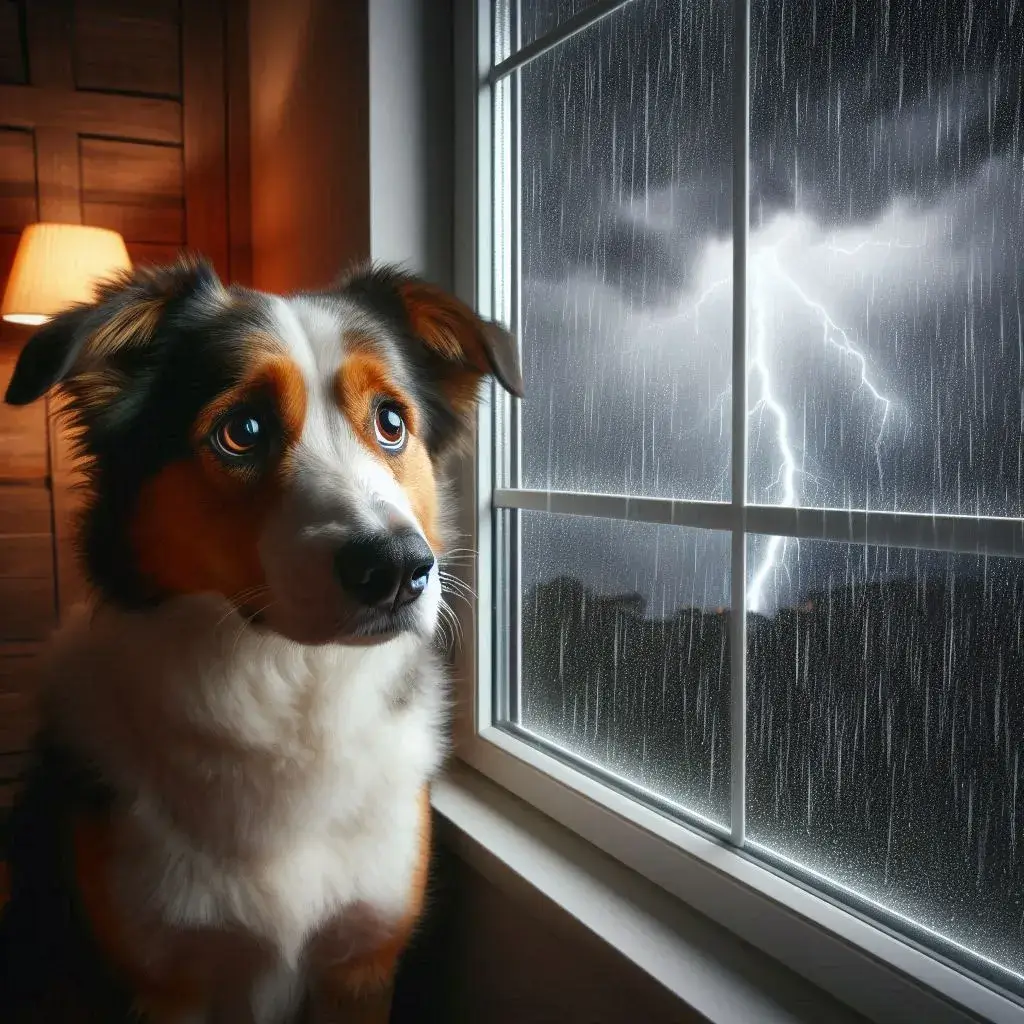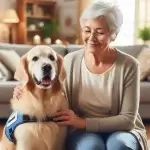Introduction: Understanding Storm Anxiety in Dogs
Storm anxiety is a common issue that affects many dogs, leading to stress, fear, and even destructive behavior. The loud noises, flashing lights, and changes in atmospheric pressure during storms can cause significant distress for dogs. As a responsible pet owner, knowing how to keep your dog calm during storms is essential to ensure their well-being. This comprehensive guide will explore various methods to help your dog cope with storm anxiety, from creating a safe space to using calming products and techniques.
Why Do Dogs Fear Storms?
Understanding why dogs fear storms is the first step in helping them stay calm. Storm anxiety in dogs can stem from a combination of factors, including sensitivity to loud noises, changes in barometric pressure, and even the owner’s reactions to the storm.
The Role of Loud Noises
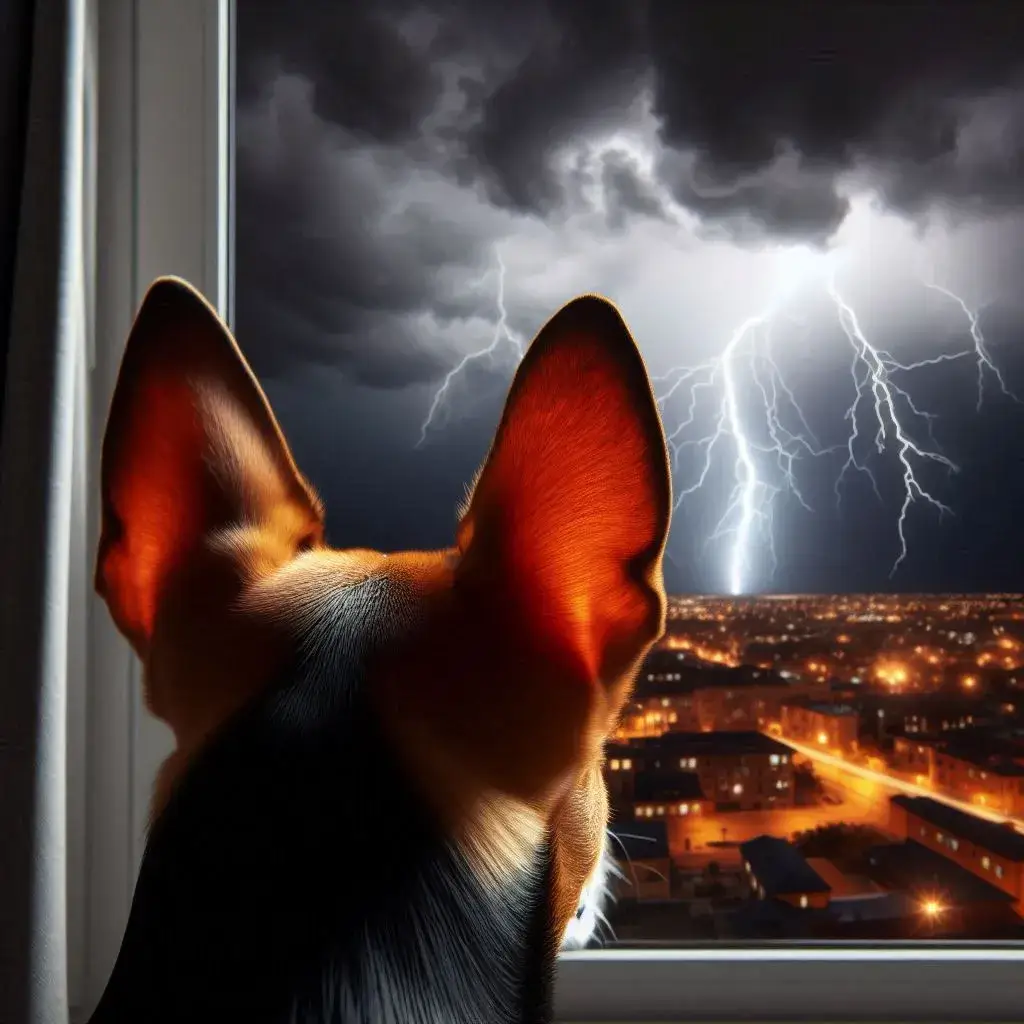
Dogs have a much keener sense of hearing than humans, making them more sensitive to the loud noises associated with storms, such as thunder and heavy rain. These sudden and unpredictable sounds can startle dogs, leading to anxiety.
Sensitivity to Thunder
- Volume and frequency: Thunder can be extremely loud and carries low-frequency sounds that dogs can detect more acutely than humans.
- Unpredictability: The sudden nature of thunderclaps can catch dogs off guard, heightening their anxiety.
Changes in Atmospheric Pressure
Dogs can sense changes in atmospheric pressure that occur before a storm. These changes can make dogs feel uneasy or nervous, contributing to their overall anxiety during storms.
Physical Sensations
- Static electricity: Some dogs may experience static electricity buildup in their fur, which can cause discomfort.
- Pressure changes: The drop in barometric pressure can create a sense of unease in dogs, as they are highly attuned to their environment.
Owner’s Reaction to Storms
Dogs often pick up on their owner’s emotions and behavior. If you are nervous or anxious during a storm, your dog may mirror these feelings, exacerbating their own anxiety.
Mirroring Behavior
- Emotional cues: Dogs are highly sensitive to their owner’s emotional state and may become anxious if they sense fear or stress in you.
- Behavioral reinforcement: If you unintentionally comfort your dog too much when they are anxious, it can reinforce their fear of storms.
Signs of Storm Anxiety in Dogs
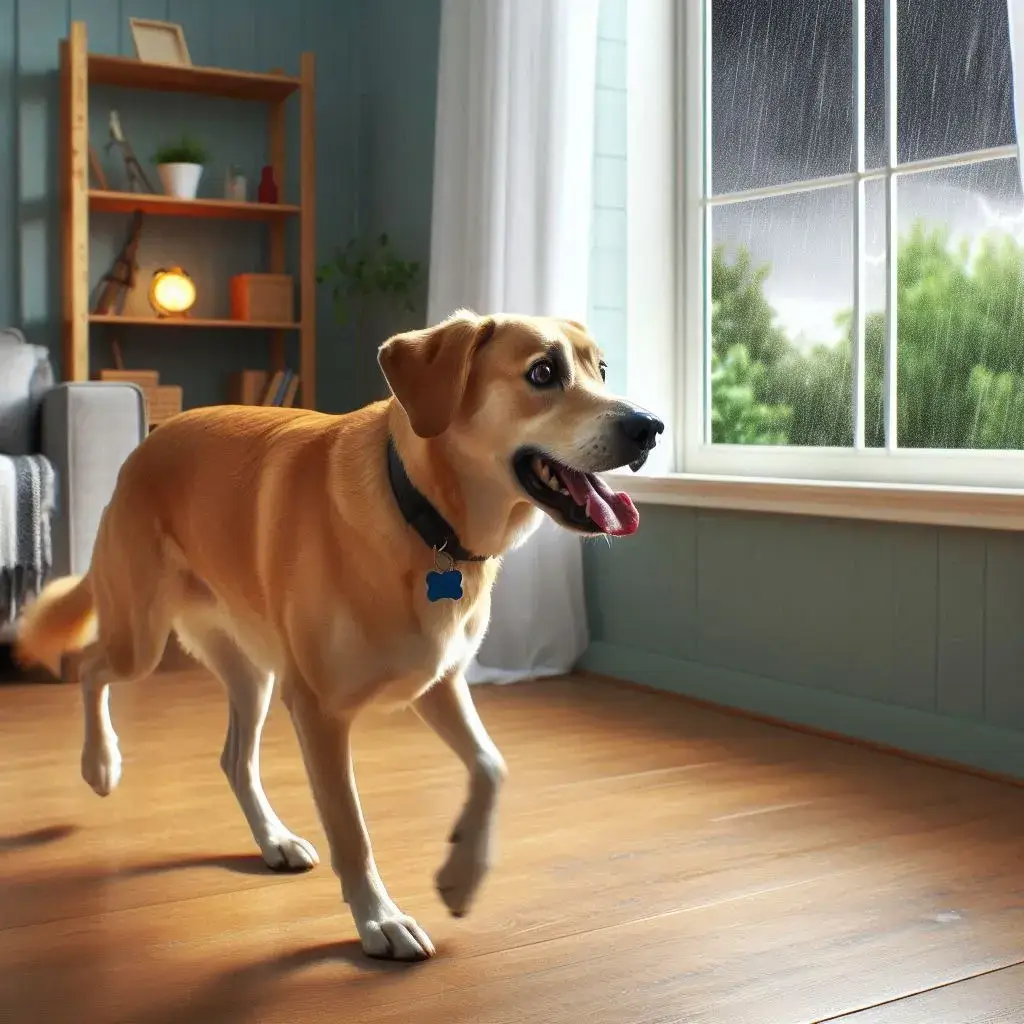
Recognizing the signs of storm anxiety in your dog is crucial for taking action to help them stay calm. Dogs may display a range of behaviors when they are anxious during a storm.
Common Behavioral Signs
- Pacing: Anxious dogs often pace back and forth as they try to find a safe place.
- Panting: Excessive panting is a common sign of stress in dogs.
- Whining or barking: Vocalizing is a way for dogs to express their fear and seek comfort.
- Hiding: Some dogs will try to hide under furniture or in small spaces to escape the storm.
- Trembling: Shaking or trembling is a physical manifestation of fear and anxiety.
- Destructive behavior: Chewing, scratching, or other destructive behaviors can occur as a result of high anxiety levels.
Physical Symptoms
- Dilated pupils: A dog’s pupils may become dilated due to fear.
- Excessive drooling: Anxious dogs might drool more than usual.
- Loss of bladder control: In severe cases, a dog may urinate or defecate indoors out of fear.
Creating a Safe Space for Your Dog
One of the most effective ways to keep your dog calm during storms is to create a safe, comfortable space where they can feel secure.
Choosing the Right Location
Select a location in your home where your dog feels comfortable and that is as soundproof as possible.
Ideal Safe Spaces
- Interior rooms: Choose a room in the center of your house, away from windows and exterior walls, where the noise of the storm is less intense.
- Basement: A basement can be a good option as it tends to be quieter and more insulated from outside noise.
- Crate: If your dog is crate-trained, a covered crate can provide a den-like space where they feel secure.
Making the Space Comfortable
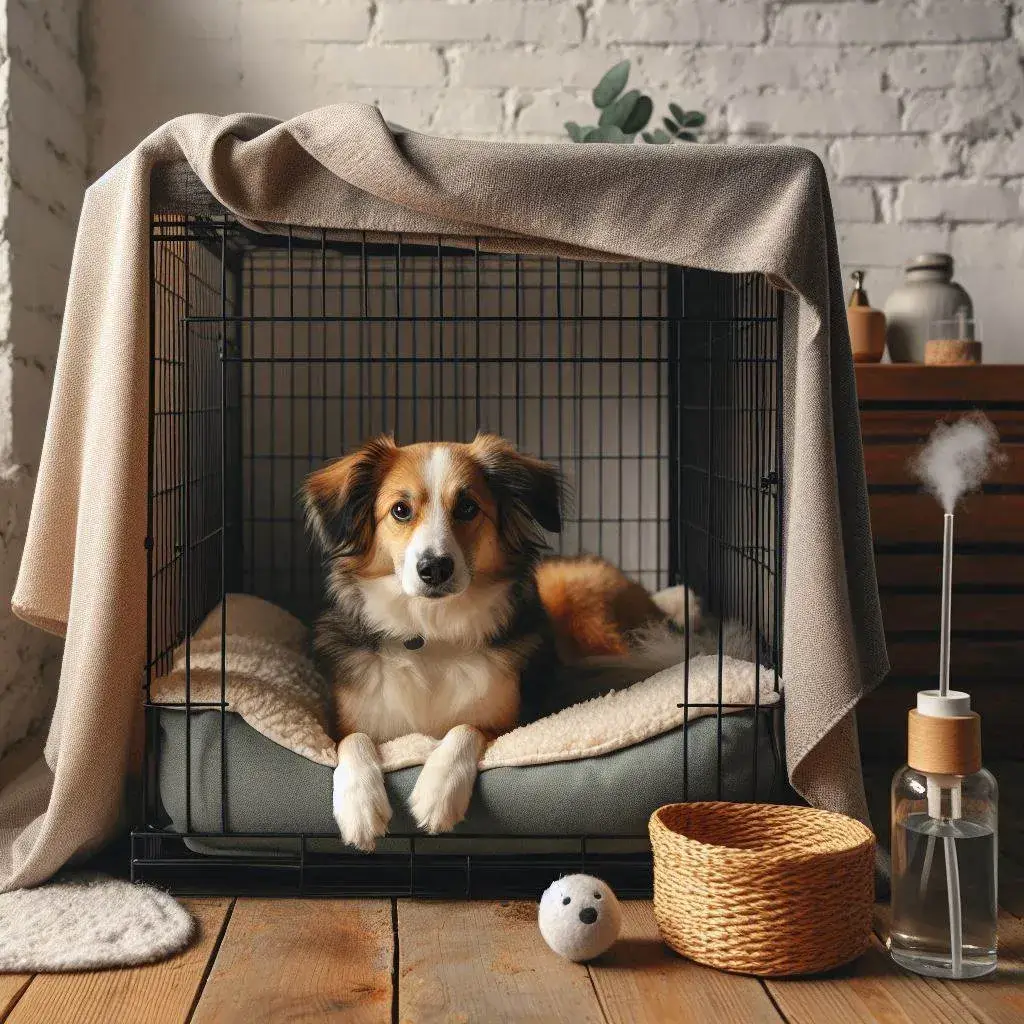
Enhance your dog’s safe space with familiar items and comforts to help reduce their anxiety.
Comfort Items
- Favorite blanket or bed: Provide a soft, familiar blanket or bed for your dog to lie on.
- Toys: Include your dog’s favorite toys to keep them occupied and distracted from the storm.
- Calming scents: Consider using dog-safe essential oils, such as lavender, to create a calming atmosphere.
Soundproofing Techniques
Reducing the noise from the storm can help keep your dog calm.
Effective Methods
- Heavy curtains: Hang heavy curtains or blankets over windows to muffle the sound of thunder.
- White noise machines: Use a white noise machine or play calming music to drown out the sound of the storm.
- Soundproofing panels: Consider adding soundproofing panels to the walls of the safe space if the storm noise is particularly intense.
Calming Products and Tools
Several products are designed to help keep dogs calm during storms. These tools can be used in conjunction with a safe space to enhance your dog’s comfort.
Thundershirts and Anxiety Wraps
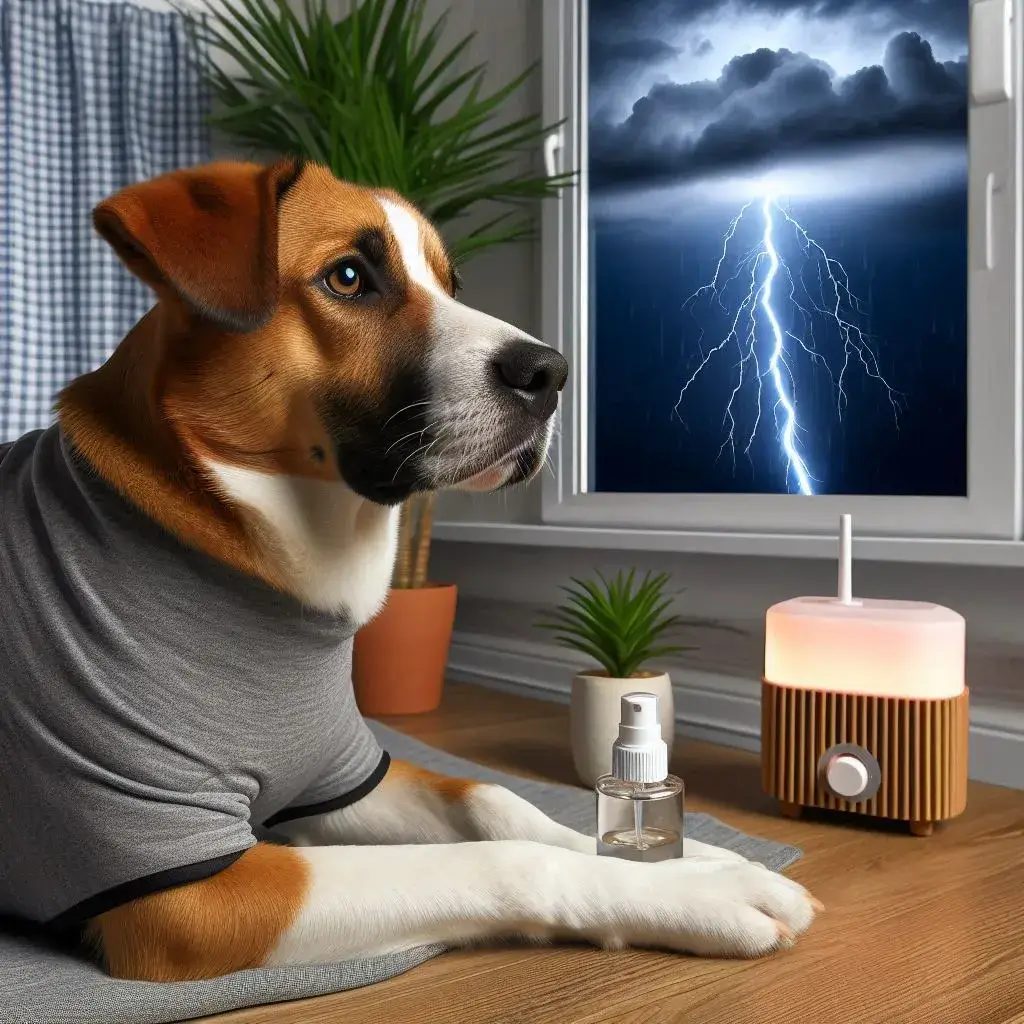
A Thundershirt or similar anxiety wrap can provide gentle pressure to your dog’s body, helping to calm their nerves.
How They Work
- Pressure application: The wrap applies gentle, constant pressure to your dog’s torso, similar to swaddling a baby, which can have a calming effect.
- Usage tips: Put the wrap on your dog before the storm starts to help reduce anxiety from the onset.
Calming Supplements
Natural calming supplements can help reduce your dog’s anxiety during storms.
Popular Supplements
- CBD oil: Cannabidiol (CBD) oil can help reduce anxiety in dogs without causing sedation.
- Chamomile: Chamomile is a natural calming agent that can be given to dogs in small doses.
- L-theanine: An amino acid found in tea leaves, L-theanine has calming properties that can help soothe an anxious dog.
Consulting with a Vet
- Safety: Always consult with your veterinarian before giving your dog any new supplement to ensure it is safe and appropriate for their specific needs.
Calming Diffusers and Sprays
Calming diffusers and sprays release soothing pheromones or scents that can help your dog relax.
Types of Diffusers and Sprays
- Pheromone diffusers: Products like Adaptil mimic the calming pheromones that mother dogs release to comfort their puppies.
- Essential oil sprays: Dog-safe essential oil sprays can be used to create a calming environment.
Behavioral Training Techniques
In addition to creating a safe space and using calming products, training your dog to cope with storms can be highly effective. Behavioral training techniques can help your dog develop resilience to storm-related anxiety.
Desensitization Training
Desensitization involves gradually exposing your dog to the sounds of a storm in a controlled environment, helping them become less reactive over time.
How to Implement Desensitization
- Audio recordings: Play recordings of storm sounds at a low volume while your dog is engaged in a positive activity, such as playing or eating.
- Gradual increase: Slowly increase the volume over time as your dog becomes more comfortable with the sounds.
- Positive reinforcement: Reward your dog with treats and praise when they remain calm during the desensitization process.
Counterconditioning
Counterconditioning involves changing your dog’s emotional response to storms by associating the experience with something positive.
Steps to Counterconditioning
- Identify triggers: Determine what aspects of the storm cause your dog the most anxiety.
- Pair with rewards: During a storm, give your dog high-value treats or engage them in a favorite activity to create a positive association.
- Consistency: Practice this technique consistently to help change your dog’s perception of storms over time.
What Not to Do During a Storm
While it’s important to comfort your dog during a storm, there are some actions you should avoid, as they can inadvertently reinforce their anxiety.
Avoid Over-Reassuring
Overly comforting your dog when they are anxious can reinforce their fear by signaling that there is something to be afraid of.
How to Avoid
- Stay calm: Maintain a calm and composed demeanor to help your dog feel safe.
- Limit excessive petting: While it’s okay to offer gentle reassurance, avoid excessive petting or coddling that could reinforce anxious behavior.
Don’t Punish Anxious Behavior
Punishing your dog for exhibiting anxiety during a storm can increase their stress and worsen the problem.
Understanding Your Dog’s Fear
- Fear response: Remember that your dog’s behavior during a storm is a response to fear, not disobedience.
- Positive reinforcement: Focus on rewarding calm behavior rather than punishing anxious behavior.
Long-Term Strategies for Managing Storm Anxiety
For dogs with severe storm anxiety, long-term strategies may be necessary to help them cope.
Consulting a Professional Trainer
A professional dog trainer or behaviorist can help you develop a customized plan to address your dog’s storm anxiety.
What to Expect
- Assessment: The trainer will assess your dog’s behavior and develop a tailored training plan.
- Techniques: They may use advanced techniques such as systematic desensitization or counterconditioning to reduce your dog’s anxiety.
Veterinary Intervention
In some cases, veterinary intervention may be necessary to manage severe storm anxiety.
Medications for Severe Anxiety
- Anti-anxiety medications: Your veterinarian may prescribe anti-anxiety medications for use during storms.
- Behavioral therapy: Medications are often used in conjunction with behavioral therapy to achieve the best results.
Ongoing Training and Reinforcement
Continued training and reinforcement of positive behaviors can help your dog remain calm during storms over the long term.
Regular Practice
- Routine training: Incorporate desensitization and counterconditioning into your regular training routine.
- Positive experiences: Continue to create positive associations with storm-related triggers to reduce anxiety over time.
FAQs About Keeping Dogs Calm During Storms
1. How can I tell if my dog has storm anxiety?
Signs of storm anxiety include pacing, panting, whining, hiding, trembling, and destructive behavior. If your dog exhibits these behaviors during a storm, they may be experiencing anxiety.
2. Can I give my dog human anxiety medication during a storm?
No, you should never give your dog human medication without consulting your veterinarian. Some human medications can be toxic to dogs.
3. Are certain breeds more prone to storm anxiety?
While any dog can develop storm anxiety, some breeds, such as herding breeds and those with high sensitivity to sound, may be more prone to anxiety during storms.
4. Can I use a crate to help my dog feel safe during a storm?
Yes, if your dog is crate-trained and finds comfort in their crate, it can serve as a safe space during a storm. Ensure the crate is covered with a blanket to reduce noise and create a den-like environment.
5. How long does it take to reduce storm anxiety in dogs?
The time it takes to reduce storm anxiety varies depending on the dog and the severity of their anxiety. With consistent training and the use of calming techniques, you may start to see improvements in a few weeks to several months.
6. Should I stay home with my dog during a storm?
If possible, it can be helpful to stay with your dog during a storm to provide comfort and monitor their behavior. However, it’s important to remain calm and avoid reinforcing anxious behavior.
Conclusion: Helping Your Dog Weather the Storm
Storm anxiety is a challenging but manageable issue for many dogs. By understanding the causes of your dog’s anxiety and implementing the strategies outlined in this guide, you can help your dog feel more secure and calm during storms. Whether through creating a safe space, using calming products, or employing training techniques, your efforts can make a significant difference in your dog’s comfort and well-being during these stressful times.
